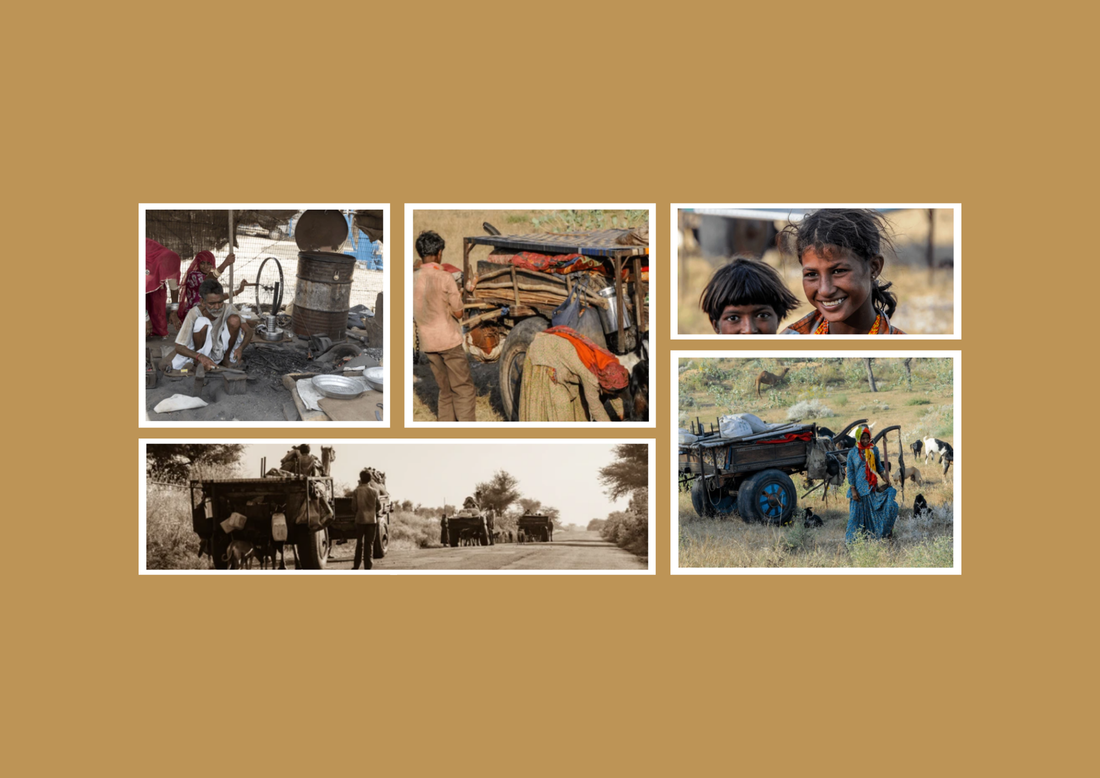The Gadhiya Lohars, a community of skilled blacksmiths from Rajasthan, are known for their exceptional craftsmanship and unique nomadic lifestyle that has persisted for centuries. Originally hailing from Mewar, they were the royal ironsmiths serving under Maharana Pratap, the legendary Rajput king. After Mewar’s defeat by the Mughal Empire in the 16th century, the Gadhiya Lohars took a solemn oath: never to settle permanently until Mewar was free from foreign rule. This oath became central to their identity, marking the start of their semi-nomadic lifestyle, passed down through generations.
From Bullock Carts to Urban Margins
Historically, the Gadhiya Lohars moved across northern and central India with their belongings on bullock carts, setting up temporary camps. While their footprint remains in states like Rajasthan, Gujarat, Madhya Pradesh, and Uttar Pradesh, many have settled in urban fringes, replacing bullock carts with makeshift huts and tents. However, their semi-nomadic lifestyle keeps them at the margins, where access to essential services such as clean water, sanitation, and electricity is often limited.
Master Blacksmiths: Craftsmanship Rooted in Tradition
The Gadhiya Lohars’ expertise in blacksmithing is a cultural hallmark, traditionally producing high-quality agricultural tools and iron kitchenware that were once indispensable to rural communities. Today, despite the rise of modern materials like plastic, many Gadhiya Lohars remain committed to their craft, though the demand has declined. Their tools and iron products reflect generations of knowledge. They are known for durability, but the community faces increasing pressure to adapt as modern technology and mass production reshape the marketplace.


Cultural Identity and the Struggle for Recognition
The Gadhiya Lohars are deeply proud of their heritage, especially their connection to Maharana Pratap and their identity as Rajput blacksmiths. However, their semi-nomadic lifestyle and lack of formal documentation, such as caste certificates, have hindered their access to education, healthcare, and social services. Efforts to mainstream the community, including a 1950s resettlement initiative in Chittorgarh by Jawaharlal Nehru, have had limited impact, leaving the Gadhiya Lohars largely outside formal society.
Facing Modern Challenges: Housing and Eviction Threats
Housing insecurity remains a pressing issue for the Gadhiya Lohars. Their temporary homes are vulnerable to eviction and demolition without formal land ownership. Urban Gadhiya Lohar settlements often face eviction threats from local authorities, placing the community at constant risk of displacement. A 2019 report highlighted the challenges these communities face in accessing essential services, which only deepens their marginalisation in India’s rapidly urbanising landscape.
A Story of Resilience and Survival
Despite ongoing hardships, the Gadhiya Lohars have shown remarkable resilience. Their journey, from royal blacksmiths in Mewar’s service to marginalised artisans, underscores modern India's complexities of tradition, identity, and adaptation. As the community faces pressures to settle, advocates stress the need for measures to secure their access to housing, land rights, and social services, which could significantly improve their quality of life.
Conclusion
The Gadhiya Lohars exemplify strength, pride, and resilience. As they navigate the challenges of modern India, their legacy as master blacksmiths and bearers of an age-old oath lives on. Supporting the Gadhiya Lohars through inclusive policies that provide access to social services and recognise their cultural heritage can be vital in preserving their unique identity and ensuring a more secure future.
